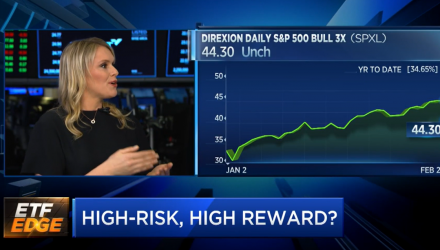Just like an individual stock, an exchange-traded fund (ETF) can be bought and sold freely via an exchange. This dynamic ability gives traders the option to make quick intraday trades to seek a profit.
Traders can also take advantage of leveraged ETFs in order to capitalize on the short-term momentum of a specific ETF. What is leverage and how can an investor incorporate leveraged ETFs into his or her portfolio?
If an investor is betting that a specific sector or stock will go down, he or she will have to short that stock or group of stocks. Furthermore, shorting stocks are typically bought on margin, meaning the investor will have to borrow the money from the broker–known as leverage.
With an inverse ETF, an investor can be bearish without having to buy the securities on margin. If an investor does wish to leverage a trade, there are leveraged ETFs available that allow investors to amplify their returns by multiples of 1.25, 2 or 3 times, depending on the ETF product.
The amount of leverage will depend on how aggressive the trader wants to get. Investors who are new to leveraged ETF trading can opt for lesser leverage to test out the waters.
Leveraged ETFs can help you triple your gains, but watch out for this misstep, says Direxion’s Sylvia Jablonski. To find out, click the video below:
For more market trends, visit ETF Trends.








